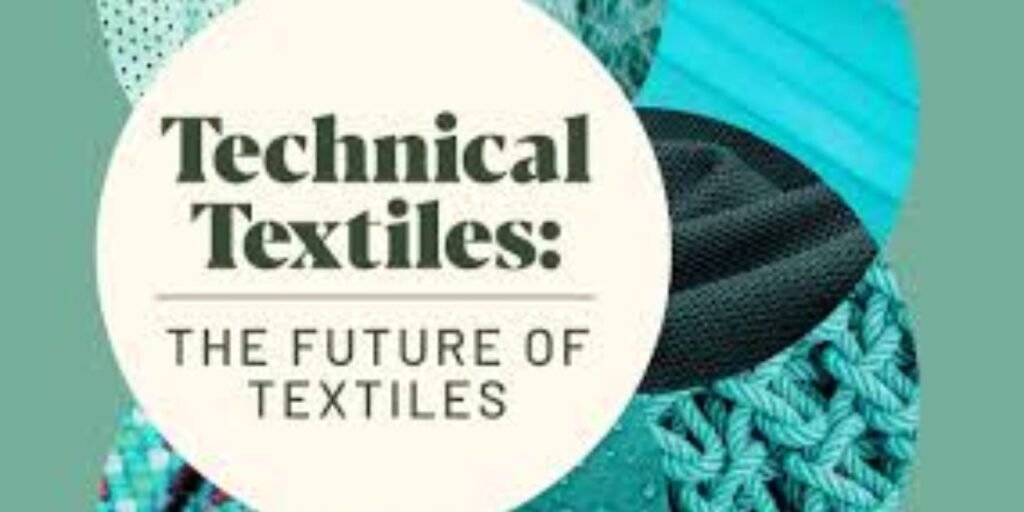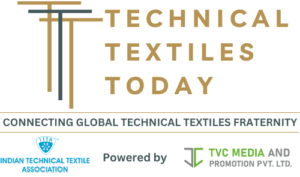
Dr. Prabhakar Bhat
Abstract:
The Technical Textiles (TT) sector in India has emerged as a key area of focus, drawing significant attention from businesses, entrepreneurs, and the government. Despite the rapid growth of the market, TT investments have yet to meet the ambitious targets set by the Government of India. This paper explores the reasons behind this shortfall and outlines the opportunities and challenges faced by the industry. The Indian TT market, valued at $19 billion in 2018-19, is expected to grow at a compound annual growth rate (CAGR) of 12%, with technical textiles projected to contribute significantly to the nation’s GDP by 2024-25. However, despite this promising growth, the market size has yet to reach the target of $40 billion by 2023-24, largely due to difficulties in identifying viable products and the prevailing risk-averse mindset within India’s small and medium-sized enterprises (SMEs). The paper discusses the factors hindering growth, including the fear of failure, lack of technical expertise, and the preference for quick returns on investment. It also highlights the distinct advantages of entering the TT business, such as reduced competition, higher profit margins, and opportunities for innovation. A structured approach to entering the TT market—comprising expert consultation, self-study, product selection, detailed research, market surveys, and business model creation proposed to guide businesses in making informed decisions. The paper concludes by emphasizing the future potential of technical textiles in India, stressing the need for specialized knowledge and strategic investment to unlock the sector’s true promise.
1.Introduction:
Technical Textiles (TT) have become a key topic of discussion in India’s textile industry, capturing the attention of businesses and entrepreneurs alike. The excitement and enthusiasm surrounding this sector have sparked a strong desire to enter the market, creating a sense of urgency among stakeholders. This growing interest is largely thanks to the efforts of the Government of India, the Ministry of Textiles (MOT), and various other bodies that have worked tirelessly to promote TT in the country.
However, despite the hype and ambitious targets set by the government to drive revenue, business growth, job creation, and exports, investments in the TT sector have failed to meet expectations. The reasons for this shortfall, whether known or unknown, remain a subject of discussion.
TT is a broad category encompassing a variety of sectors, each with its own distinct products. While the size and growth rate of these sectors can provide a general understanding of the market, they may not always serve as reliable indicators for making investment decisions. Nevertheless, a brief overview of the market potential can serve as a useful starting point for those considering investment in the sector.
2.Market Overview:
The Indian technical textiles market was valued at approximately $19 billion in 2018-19, growing at a compound annual growth rate (CAGR) of 12% over the past five years. In comparison, the overall textile industry grew at just 8.7% during the same period, with conventional textiles showing even slower
growth. Technical textiles currently contribute around 0.7% to India’s GDP and account for nearly 13% of the country’s total textile and apparel market. By 2024-25, the share of technical textiles in the Indian textile industry is projected to reach 28%.
Among the various sectors within TT, the segments expected to grow at a rate faster than a 10% CAGR include Oekotech, Protech, Mobiltech, Geotech, Indutech, Agrotech, and Buildtech. On the other hand, Packtech, a long-established segment within the domestic market, is forecast to experience more moderate growth.
The future trajectory of India’s National Technical Textiles Mission (NTTM) will play a critical role in shaping these forecasts, as the success of the Mission will largely depend on how the market responds to the initiatives under its framework.
On the global front, sectors such as Oekotech, Geotech, Buildtech, Meditech, Protech, and Sportech are expected to see a relatively higher growth rate (CAGR > 5%) in terms of consumption during the period
from 2020 to 2025. Globally, Mobiltech, Indutech, Meditech, Packtech, and Sportech will continue to
account for a significant portion of the total value of the technical textiles market.
3.Challenges and Unmet Targets:
The target market size for technical textiles in India was set at $40 billion by 2023-24. However, the estimated market size for 2022-23 stands at just $28 billion—far from the projected figure. Despite all the necessary government support and incentives, why has the sector not achieved its expected growth? While the government, the industry, and other stakeholders are all deeply committed to promoting the sector, the actual outcomes have yet to live up to hype.
a) Why falling short of expectations?
The growth of the Technical Textiles (TT) industry in India has fallen short of expectations, primarily
because businesses struggle to identify the right products to manufacture. Selecting the appropriate
products requires comprehensive data, such as:
Product types and specifications
Market size per product
Price ranges
Market dynamics
Availability of technology, raw materials, machinery, processes, manpower, certifications,
investment size, production costs, profit margins, and business lifespan
Expert guidance and support
b) Fear of Failure:
One of the biggest barriers to TT growth in India is the “Fear of Failure.” Today, approximately 95% of the textile industry is dominated by MSMEs, many of which are family-owned, traditional, and not technically proficient in TT. While some newer generations in these businesses are technically skilled, the significant investment required often limits their ability to take the plunge.
c) Mindset:
Another challenge is the traditional mindset within industry. Indian businesses generally want:
Low risk
Quick returns on investment
Imitation of others over product development
Reliance on traders, with limited interest in direct marketing
Lack of recognition for technical expertise
Fear of competition and failure
Low confidence in meeting quality and delivery commitments
However, those willing to embrace the challenges of TT will find significant opportunities.
4.Why Technical Textiles?
The TT sector presents a unique and lucrative opportunity for businesses, driven by growing demand and innovation across various sectors. Unlike the saturated and highly competitive conventional textile industry, TT allows businesses to tap into niche markets with reduced competition. TT products are often tailored for specific applications, which makes them less accessible to general textile manufacturers. As a result, these products can command higher prices due to their specialized nature and superior performance. Items like fire-resistant fabrics, medical textiles, and military-grade materials require advanced manufacturing processes, high-quality raw materials, and adherence to stringent quality standards. These factors contribute to higher profit margins.
Key benefits of entering the TT industry include:
Reduced competition
Stable business with consistent product demand
Higher profit margins
Opportunities for innovation and market leadership
Satisfaction from the rewards of hard work
Engagement in the future of textiles
Loyal customer bases
Potential for import substitution under the “Make in India” initiative
Strong potential for brand development
5.How to Enter the Technical Textiles (TT) Business?
To successfully enter the Technical Textiles (TT) market, following a structured approach is essential. The steps below outline a comprehensive pathway for making informed and strategic decisions. The industry should note that once invested in machines there is little room for changes.
a. Consult Experts
Engaging the right consultants is critical when investing in TT. The investor should conduct preliminary research and narrow down a few product segments of interest. Meetings with experienced consultants or industry experts are essential at this stage. While this may require an investment of time and money, the returns on this investment are substantial. After these consultations, the investor should be able to shortlist 2 or 3 product ideas to explore further, including those that fascinates the investor.
b. Self-Study
Once the product options are narrowed down, it’s time to conduct in-depth self-study. This involves researching the products, their manufacturing processes, market potential, and business cycles. Although expert guidance should be utilized, the investor or a designated team leader must take responsibility for this phase. At this stage, the focus should be on gathering information from various sources rather than conducting hands-on fieldwork.
c. Zero-in on a Specific Product
After collecting preliminary data, a deeper evaluation is needed. Hold a meeting with the decision- makers to present the findings on the shortlisted products. Involve field experts with their inputs. The discussion should consider the overall business feasibility of each product. If none of the products seem viable, it may be necessary to select new products and start the study again. If the data is adequate, one product should be selected as the most suitable for investment.
d. Detailed Study
At this stage, a dedicated project team or coordinator must be appointed to thoroughly investigate the chosen product. The team, with expert support, should conduct a detailed study covering key aspects such as product specifications, raw material requirements, manufacturing processes, cost analysis, machinery needs, and compliance requirements. Field visits may be necessary to validate the collected data. The team should also assess government subsidies and incentives available for the project. After evaluating the techno economic viability, a final discussion should be held to decide further action plan.
e. Market Survey
Following the detailed study, the next step is conducting a market survey. This should focus on understanding the product’s market potential, customer needs, marketing channels, logistics, and the impact on cost. It’s important to gather feedback from existing customers about their expectations and the current products on the market. Additionally, the survey should include an analysis of trends, customer acceptance of new developments, and sensitivity to product features like cost. The market survey will help fine-tune the product offering and the overall business strategy.
Once the survey is complete, a final meeting with decision-makers should take place to review the complete picture and finalize the project.
f. Draft the Business Model
The creation of the business model is crucial to the success of the project. The TT business model is distinct from conventional textiles, requiring unconventional thinking. Simply copying existing models will not work, as TT businesses are highly specialized. Product design plays a key role, and it should be developed with input from experts, market feedback, and management’s vision.
The product design should consider the following aspects:
Geography and target market
Marketing approach and customer engagement
Essential and optional functional requirements
Competitor product designs
Unique selling points (USPs) and innovations
Cost control mechanisms
Future design trends
Product range and manufacturing scope
This is a complex process that requires the involvement of all stakeholders. Extensive consultations with experts, machinery suppliers, and raw material vendors are critical to ensure the design is feasible and aligned with market needs.
Once the design is finalized, a detailed project report (DPR) can be prepared, and a project team can be formed to execute the plan. If the product design includes innovative features, it is advisable to develop
a prototype, conduct field trials, and refine the product as needed before full-scale production.
Conclusion
The manufacturing of technical textiles is far more complex than conventional textiles. Success in this sector demands a deep understanding of the product, technology, and market dynamics. Copycats are unlikely to succeed. Investors must recognize the value of technical expertise, as this is a technology- driven industry—not a sales-driven one. In many cases, expertise is multi-disciplinary, requiring continuous collaboration with consultants, technical experts, and academic or research institutions.
While there are challenges in the TT business, they are manageable with the right approach. Technical textiles represent the future of the textile industry, offering innovation, lower competition, market stability, and higher profitability. India holds immense potential in this sector, and now is the time to seize the opportunity. Select the right expert who can partner with the promoters to ensure the success of the venture. The door to success in technical textiles is open, it’s up to industry to walk through it for a brighter and more profitable future.
